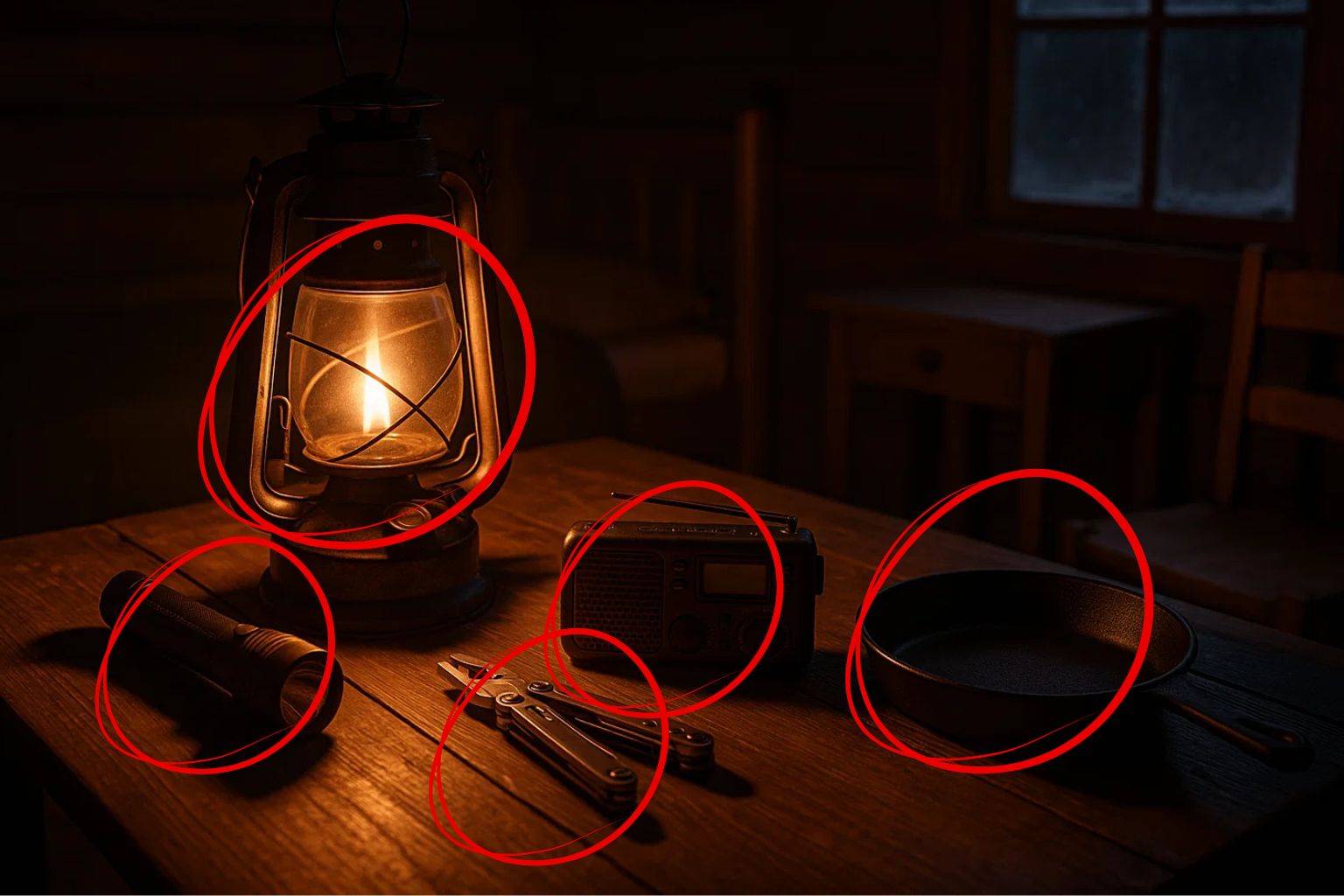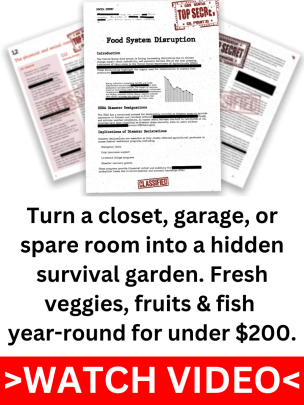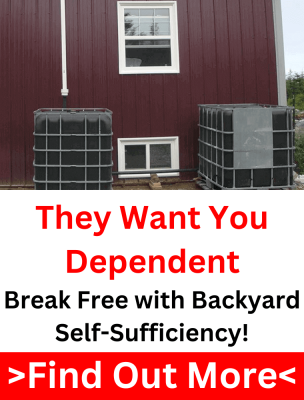For a survivalist, a self-regenerating garden is ideal. It will yield food year after year with little maintenance, offering a dependable supply of food in times of emergency or chronic crisis. Concentrating on plants that organically renew may ensure your family’s food security and save a significant amount of time and work.
This method is not only useful, but it also represents a fundamental change in the way we see gardening. A self-regenerating garden collaborates with nature to build a sustainable system that precisely embodies the ideas of readiness and independence instead of starting from scratch each season.
Understanding Regenerative Gardening
Regenerative gardening aims to build a system that can sustain itself over time. Regenerative gardens emphasize perennials or plants that grow year after year, as opposed to annuals, which must be replanted every season. These plants are a great option for preppers because they require little care.
Annual plants, while popular, live for only one season. This means you’re continuously planting, watering, and tending to them. Perennials, on the other hand, generate food for several years after they have been grown, considerably lowering the amount of work required.
Natural cycles play an important part in regenerative gardening. Understanding how soil, water, and plants interact can help you create a garden that reflects these cycles. This eliminates the use of synthetic fertilizers and pesticides, resulting in healthier plants and soil over time.
Regenerative gardens give survivalists resiliency in addition to sustenance. A crucial component of any preparation plan, nature’s processes allow you to build a system that can adapt to difficulties and flourish even in harsh environments.
The Best Plants for a Self-Regrowing Garden
Perennials are the cornerstone of plant selection for a self-regenerating garden. An excellent example is asparagus. It can produce sensitive branches every spring for decades after it is established. Another great perennial that requires little maintenance and consistently yields good harvests is rhubarb.
Additions like thyme and mint are ideal. While thyme is not only a tasty herb but also draws pollinators that help your garden stay healthy, mint spreads easily and fills your yard with its resilient leaves. These plants are perfect for survival gardening because they require little care.
An additional layer of resistance is added by self-seeding plants, including lettuce and heirloom tomatoes. By letting these plants go to seed, you can be confident that they will grow again every season without requiring you to replant, giving you a steady source of fresh vegetables.
Designing the Garden
A thorough strategy is the first step in creating a self-regenerating survival garden. Start by evaluating the space you have available and determining how much sunlight it gets each day. Select a spot that receives at least six hours of sunlight each day because the majority of self-regenerating plants prefer full sun. Raised beds and vertical planting systems are two ways to increase your growing area if you have limited room.
Preparing the soil is the first stage in creating your garden. Use a soil testing kit to check the pH balance and nutrient levels of any existing soil you’re dealing with. The ideal pH range for soil is 6.0 to 7.0, which is slightly acidic to neutral. Add organic materials, such as compost, old manure, or leaf mulch, to poor soil to make it better. Cover your garden space with a 2–3 inch layer of organic matter, then use a garden fork or tiller to mix it into the top 6–8 inches of soil. This will provide your plants with the nutrients they need to flourish.
Next, use permaculture ideas to create the layout of your garden. Create zones in the area. The plants you will harvest most often, such as herbs and leafy greens, should be in Zone 1, which is the one nearest your home. Perennials such as fruit bushes, rhubarb, and asparagus can be found in Zone 2. If there is room, choose Zone 3 for low-maintenance plants that need less care, such as berry patches or Jerusalem artichokes.
After planning your layout, pay attention to water management. Use swales, which are shallow trenches excavated following your property’s contour, to collect and hold onto rainfall. By directing water to your plant’s roots, these trenches lessen the need for additional watering. Installing a drip irrigation system is something to think about if your garden is located in a dry area. By delivering water down to the base of plants via perforated tubing, these systems reduce evaporation and guarantee effective hydration.
Start your planting with a combination of self-seeding annuals and perennials. Plants should be spaced based on how they grow. For instance, rhubarb needs at least three feet of room to accommodate its big leaves, while asparagus crowns should be planted eighteen inches apart in trenches that are six to eight inches deep. To keep herbs like mint from taking over your garden, grow them in containers or in areas that are bordered.
Protect your plants and enhance biodiversity by incorporating native species and pollinator-friendly blooms like calendula or echinacea. In addition to naturally repelling pests, these plants attract bees, butterflies, and other beneficial insects. A covering of organic mulch, such as wood chips or straw, can help regulate temperature, keep the soil moist, and prevent weeds from growing.
Lastly, to make care easier, build paths between planting zones. For accessibility and durability, use wood chips, gravel, or stepping stones. As the garden grows, review your design frequently and make changes as the plants spread out and expand again.
You can create a self-regenerating survival garden that will not only provide for your immediate food requirements but also flourish for many years to come with careful preparation and these doable procedures.
Techniques to Ensure Regrowth
Propagation is the first step in ensuring that your garden grows again. This approach involves propagating new plants from cuttings, divisions, or even leftovers. Herbs like mint and thyme are particularly easy to reproduce, allowing you to grow your garden without purchasing new plants.
Seed preservation is another important strategy. Collecting seeds from your strongest plants allows you to generate a supply that is specific to the conditions in your garden. This keeps your crops prolific and robust over time.
Reducing Maintenance Work
One of the most significant advantages of a self-regenerating garden is minimum upkeep. By employing companion planting, you can naturally repel pests and lessen the need for chemical treatments. For example, putting marigolds near your vegetables might discourage pests.
Mulch is a very useful tool for any gardener. It inhibits weeds, retains moisture, and controls soil temperature, all while saving you time on maintenance. A heavy layer of mulch can significantly improve how your garden performs.
Pruning is a seasonal practice that encourages healthier plants. Trimming back perennials like mint and thyme on a regular basis keeps them from getting overgrown and guarantees their productivity.
Drip irrigation systems are another effective technique to reduce physical labor. These systems supply water straight to your plants’ roots, eliminating waste and providing continuous hydration.
Plants that don’t produce can deplete your garden’s resources. The remainder of your garden will flourish if you can identify and get rid of these plants. A properly maintained system will essentially operate itself during peak seasons, providing food with little assistance.
A self-regenerating garden requires significantly less work than traditional gardening, even at its busiest. You may have a flourishing garden without having to worry about ongoing upkeep by putting these tips into practice.
Challenges and Solutions
Every garden has its share of difficulties. Invasive plants are a frequent problem in self-regenerating gardens. Perennials can take over your garden if they are not controlled, yet some spread naturally. This issue can be avoided with careful planting and routine monitoring.
Another issue is pests and diseases, but these can be avoided with natural remedies like using organic repellents or introducing helpful insects. Keeping a variety of plants lowers the chance of extensive infestations.
It’s critical to adjust to shifting weather conditions. Your garden may resist environmental problems such as heat waves and unexpected frost by employing frost blankets and a variety of hardy plants.
Integrating the Garden Into a Survival Plan
More than just a source of food, a self-regenerating garden is an essential component of any preparation plan. It increases your overall self-sufficiency and lessens your reliance on outside resources by supplying a steady and dependable supply of fresh produce.
Creating a self-regenerating survival garden is a long-term investment. It provides a long-term, low-maintenance answer to food security, guaranteeing you’re ready for any situation. By incorporating perennial plants, regenerative techniques, and careful planning, you may create a garden that will meet your needs for years to come.
The ideal time to start is now. Whether you’re planting your first perennial crop or learning how to conserve seeds, each step you take gets you closer to living a robust, self-sufficient lifestyle.





















